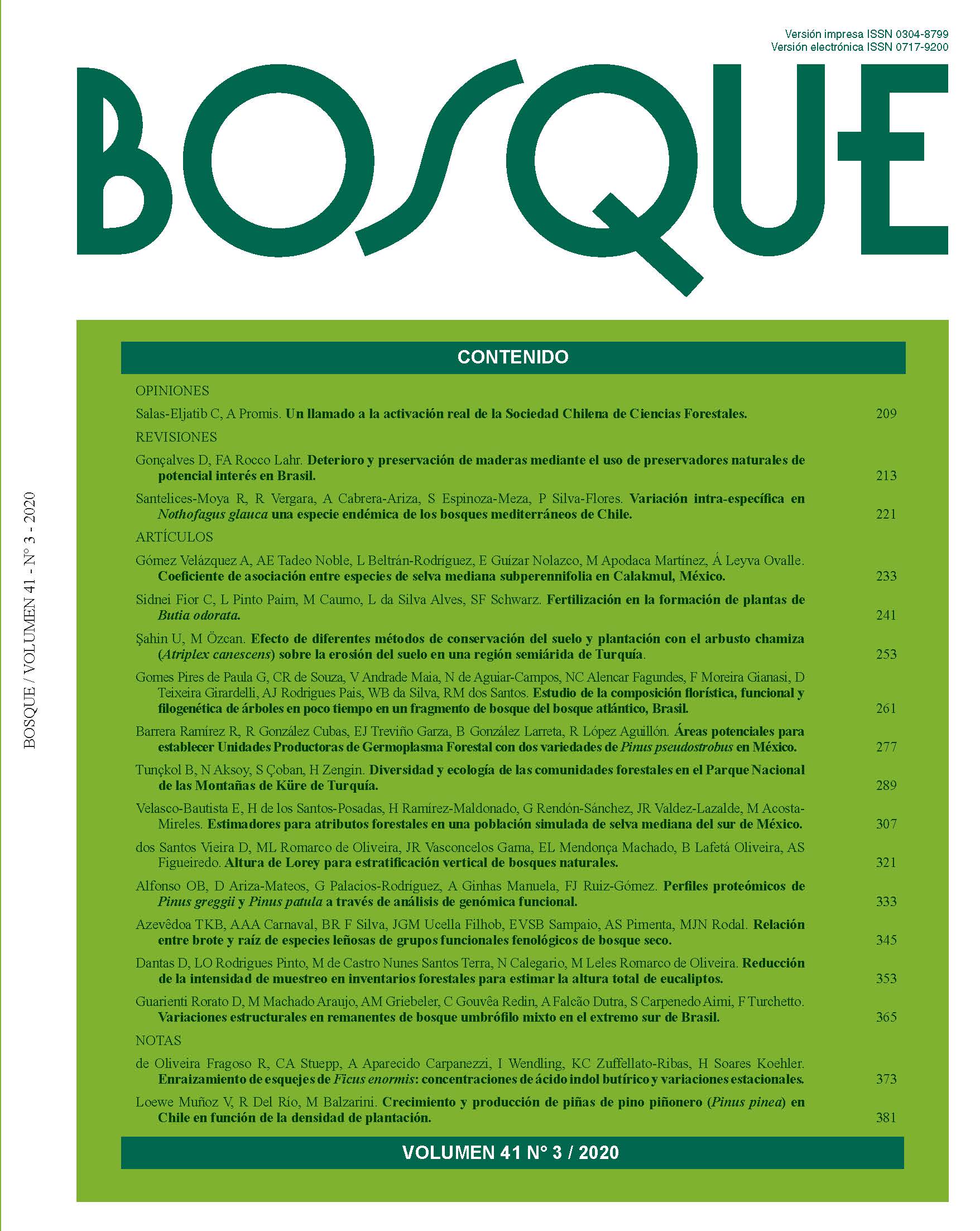Relationship between shoot and root of woody species of phenological functional groups of dry forest
Main Article Content
Abstract
Water availability in arid and semi-arid environments is the most limiting environmental factor for the development of plants, which use different mechanisms to capture the water from the soil. The objective of this work was to evaluate if there is differential allocation of resources between root and shoot of woody species of Brazilian dry forest and its relationship with the phenological functional groups of known adult woody: evergreen (EG), deciduous high density woody species (DHDW) and deciduous low density woody species (DLDW). The experiment was carried out in a greenhouse with a duration of six months, with plans submitted to two treatments: controlled irrigation (CI) and abundant irrigation (AI). Results showed that there was no interaction between phenological groups and applied treatments. However, the treatment with AI presented values of total biomass higher than those presented by CI. Fine root biomass was the only variable that did not differ between abundant irrigation and controlled irrigation. DLDW plants had higher root: shoot ratio compared to DHDW and EG. DLDW presented a differentiated strategy, being an indicative factor of these groups high thick root biomass, followed by low fine root biomass, with lower proportion of leaf biomass, and higher total biomass. These results show that CI reduces the development of seedlings in the groups and hence they invest in fine-root biomass. DLDW species presented higher investment in root biomass than in shoot, in addition to higher values of total biomass and specific leaf area.

